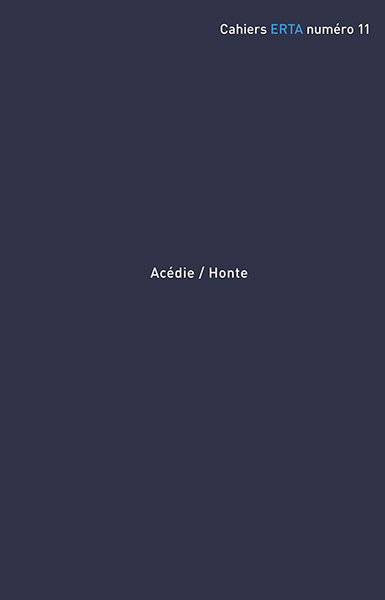Le fragment comme résurgence de l’acédie chez Cioran
Mots-clés :
Cioran, fragment, acedia, obsession, writingRésumé
This article intends to show how Cioran uses his experience of acedia to forge a very specific form of fragment. Acedia, such as the Desert Fathers defined it, implies both illness of the mind and sin of the will, therefore, writing can shows signs of both. Signs that this article will analyse include fever, exaustion, obsession, etc. However, Cioran uses writing as both an illustration of and a way to combat acedia. In the end, the fragment appears to be both an illustration and the only way to overcome acedia.
Téléchargements
Références
Barthes R., « Comment vivre ensemble : simulations romanesques de quelques espaces quotidiens », [dans :] Idem, Cours au Collège de France 1976‐1677, Paris, Seuil, 2002 (enregistrement audio sur CD‐rom).
Cassien J., « Conférence de l'abbé Sarapion, 11, 9 », [dans :] Idem, Conférences, Dom E. Pichery (trad.), Paris, Cerf, 2008, t. 1.
Cassien J., « 2e conférence, 24 », [dans :] Idem, Conférences, Dom E. Pichery (trad.), Paris, Cerf, 2008, t. 1.
Cioran E., Cahiers 1957‐1972, Paris, Gallimard, 1997.
Cioran E., OEuvres, Paris, Gallimard, 1995.
Cioran E., Entretiens, Paris, Gallimard, 1995.
Évagre le Pontique, Traité pratique ou Le Moine, A. Guillaumont et C. Guillaumont (éd. critique et trad.), Paris, Cerf, 1971, t. 2.
Lacarrière J., Les hommes ivres de Dieu, Paris, Arthaud, 1961.
Larue A., L'autre mélancolie. Acedia, ou les chambres de l'esprit, Paris, Hermann, 2001.
Modreanu S., Le Dieu paradoxal de Cioran, Paris, Éditions du Rocher, 2003.

 Revues scientifiques académiques
Revues scientifiques académiques





